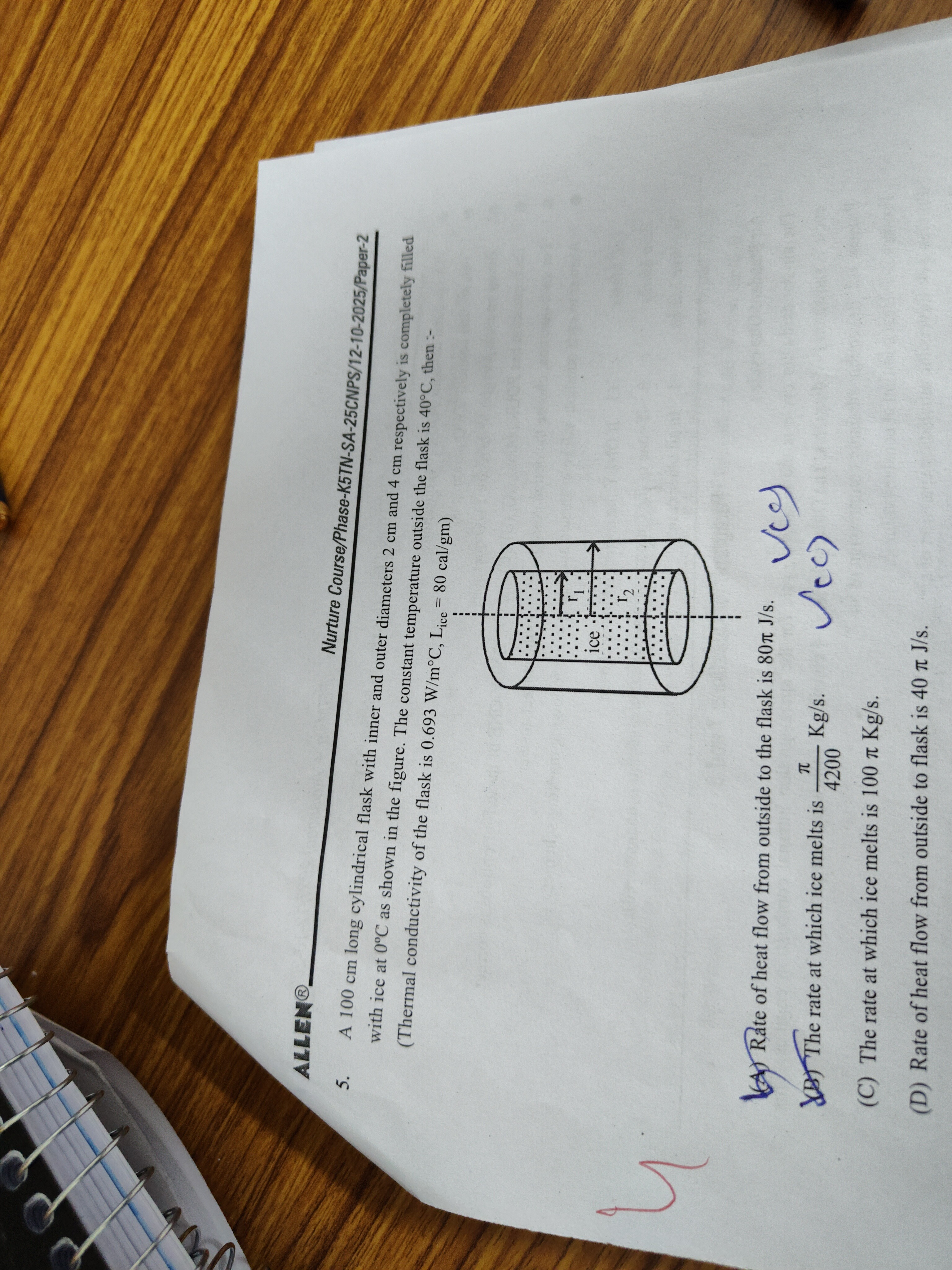Question
Question: A 100 cm long cylindrical flask with inner and outer diameters 2 cm and 4 cm respectively is complet...
A 100 cm long cylindrical flask with inner and outer diameters 2 cm and 4 cm respectively is completely filled with ice at 0°C as shown in the figure. The constant temperature outside the flask is 40°C, then :- (Thermal conductivity of the flask is 0.693 W/m°C, Lice = 80 cal/gm)

Rate of heat flow from outside to the flask is 80π J/s.
The rate at which ice melts is 4200π Kg/s.
The rate at which ice melts is 100π Kg/s.
Rate of heat flow from outside to flask is 40π J/s.
The correct options are (A) and (B).
Solution
-
Heat Flow Calculation: The rate of heat flow (H) through a cylindrical wall is given by: H=ln(router/rinner)2πKL(Touter−Tinner) Given values:
- Length, L=100cm=1m
- Inner radius, r1=22cm=1cm=0.01m
- Outer radius, r2=24cm=2cm=0.02m
- Thermal conductivity, K=0.693W/m∘C
- Temperature difference, ΔT=Touter−Tinner=40∘C−0∘C=40∘C
Substituting these values: H=ln(0.02m/0.01m)2π(0.693W/m∘C)(1m)(40∘C) H=ln(2)2π(0.693)(40) Using the approximation ln(2)≈0.693: H=0.6932π(0.693)(40)=2π(40)=80πJ/s This matches option (A).
-
Ice Melting Rate Calculation: The heat flowing into the ice is used for melting. The rate of melting (dtdm) is given by: dtdm=LiceH Given latent heat of fusion, Lice=80cal/gm. To use this in SI units, we convert calories to Joules and grams to kilograms. A common approximation used in such problems is 1cal=4.2J. Therefore, 1cal/gm=4.2J/gm=4.2×1000J/kg=4200J/kg. So, Lice=80×4200J/kg=336000J/kg.
Now, calculate the rate of melting: dtdm=336000J/kg80πJ/s dtdm=33600080πkg/s dtdm=4200πkg/s This matches option (B).
